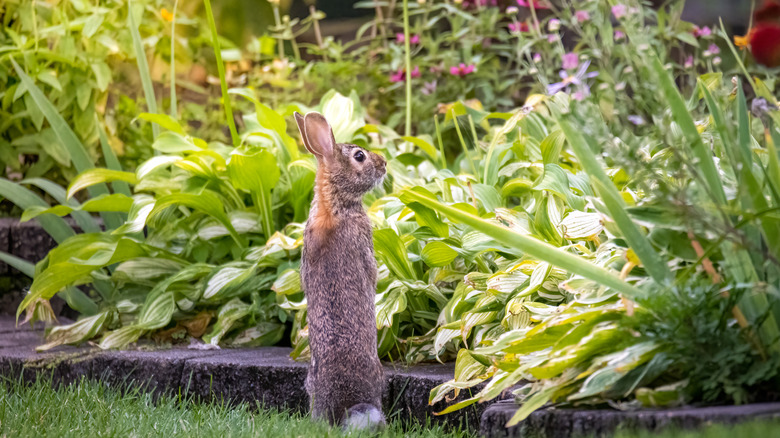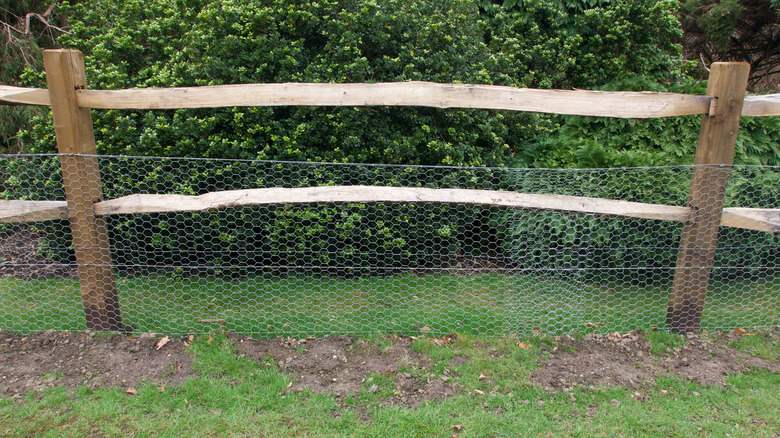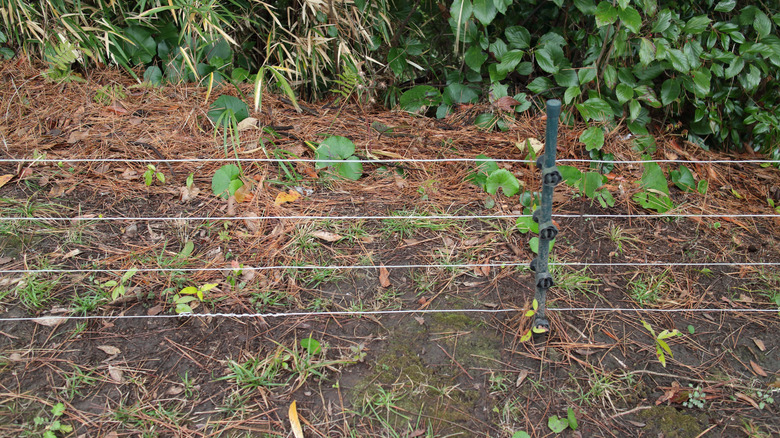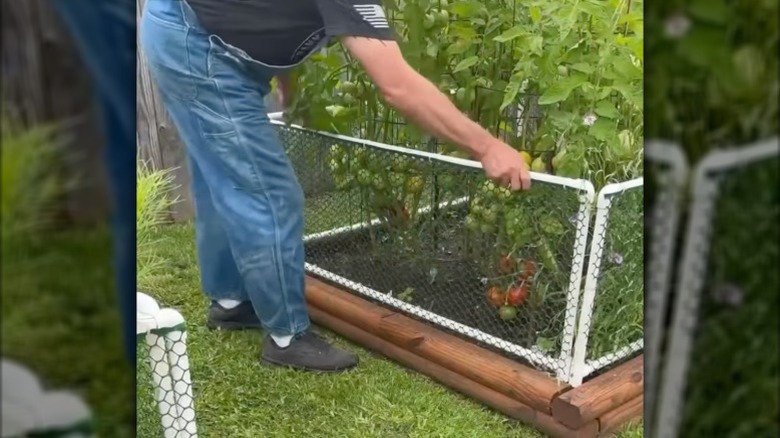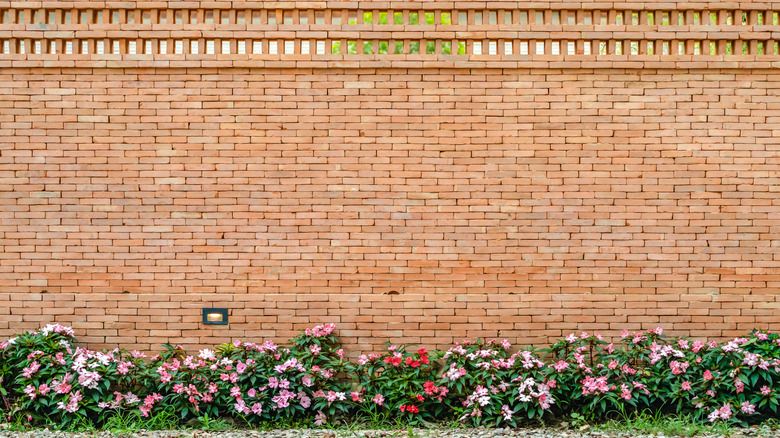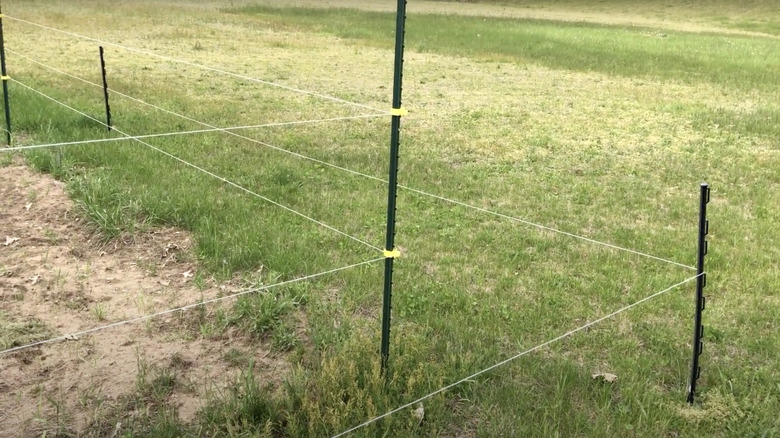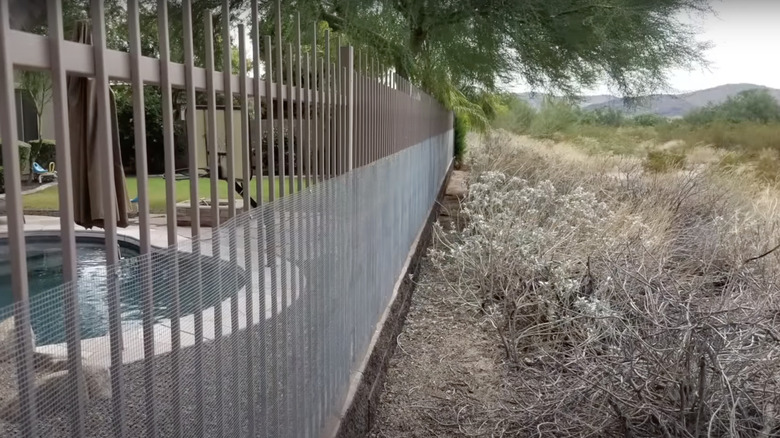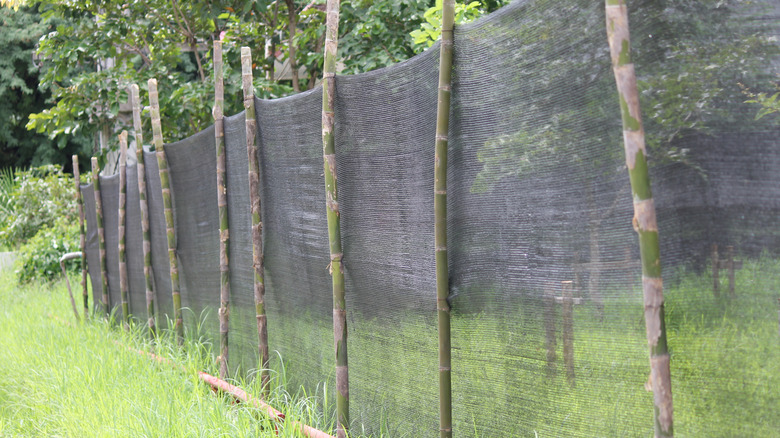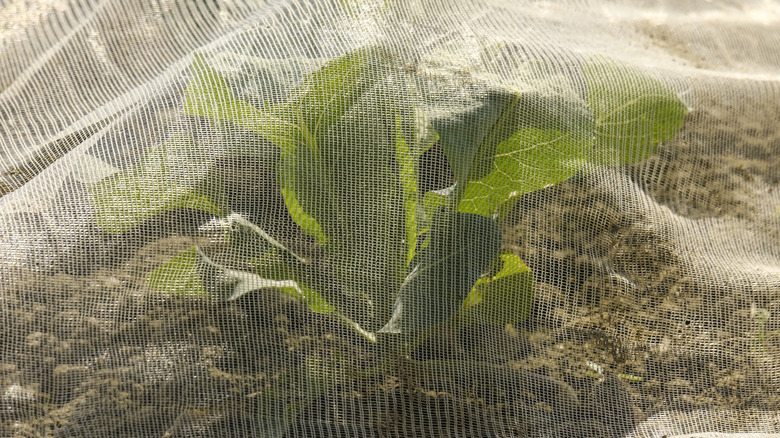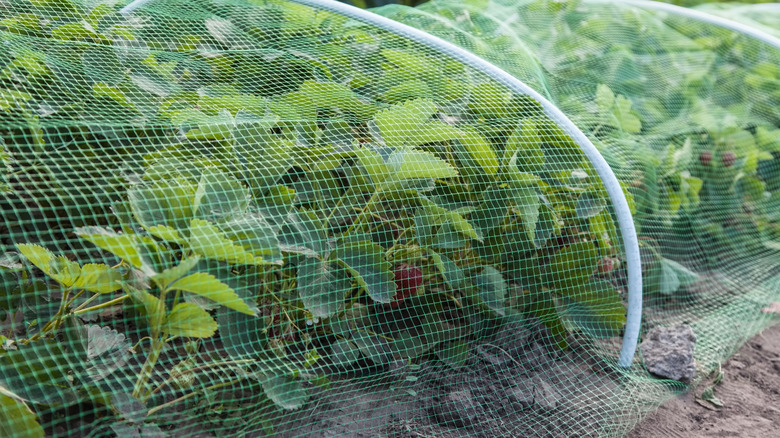9 Fence Ideas To Keep Annoying Animals And Pests Out Of Your Garden
Dealing with animals and pests in your garden can be frustrating enough to make you want to turn the entire yard into Fort Knox. Indeed, while other pest prevention approaches exist, fencing is often the most effective long-term method for preventing wildlife damage. But building the right type of fence is key — a fence designed to keep out deer probably won't also keep out chipmunks, or vice versa. Fencing options to consider for your garden include brick, 3D electric strands, buried chicken wire, plastic mesh, and more.
You can identify the type of wildlife that you're dealing with by inspecting the damage. Dug-up garden beds or lawns may be a sign of raccoons or skunks, while rabbits tend to strip bark away from trees and munch on leaves. If you see higher-up damage on trees as well as messier bites on the leaves, that's a sure sign of deer. You can also check the ground for prints or invest in a trail cam to catch your visitors red-handed (or pawed, or hoofed). If you notice more than one species, you may need to combine multiple types of fencing to effectively keep pests out of your garden.
Garden fences also need to be sturdy and carefully designed. That's because to wild animals, your carefully cultivated garden is a treasure trove of ripe snacks and safe shelter that's worth going through extra effort to reach. That's even more true if the animals are already in the habit of visiting your property.
Buried wire fence
A sturdy chicken wire or woven wire fence can successfully keep out woodchucks, skunks, and porcupines, but only if it's properly installed. Skunks and groundhogs will burrow underneath if possible, so the wire must be buried about 3 feet deep or extended outward in an L shape to prevent digging at the surface. The fence should be at least 3 feet high, and the holes in the wire should be at most 2 inches wide to prevent smaller critters from squeezing through.
Small electric fence
Dealing with crafty climbers such as woodchucks, raccoons, squirrels, and chipmunks? Consider adding an electric fence to your garden. You need only two or three electric strands, starting 6 inches off the ground, to successfully keep out raccoons, which are often too agile to be deterred by non-electric fences. You can also add electric strands to an existing wire fence.
PVC fence
You can keep your garden safe from rabbits with a budget-friendly PVC fence made with pipes, conduit, and plastic or wire mesh. Rabbits will be deterred by a short fence of around 2 feet, but they can squeeze into small spaces. The bottom of this fence type should be installed tight against the ground, which is just as effective as burying the fence into the soil. Make sure you choose mesh with holes no larger than 1 inch. The design of this fence allows you to easily access your plants as needed.
Tall brick fence
Deer are tough creatures to bar from your garden because they can jump incredibly high, up to 7 feet or more, and are able to squeeze through gaps in wooden fences with slats. The only 100% deer-proof fence is a brick or woven wire fence that is at least 8 feet tall. It's a big investment but is well worth it for your garden if you can swing it.
3D electric fence
If you can't afford a tall brick or wire fence, a three-dimensional electric fence is the next-best option for discouraging deer from gardens. This type of fencing is considered "3D" because it consists of two layers of electric fencing that are spaced apart horizontally as well as vertically. Apart from deterring deer with an electric shock, this configuration prevents them from jumping over the fence because they have poor depth perception. In addition to the electric strands, charger, grounding rod, and insulators, you'll need corner and perimeter posts. The total height should be around 4 to 5 feet.
Hardware cloth fence
Believe it or not, hardware cloth fencing might be the answer to your snake problem and is also effective against turtles and voles. Both aluminum and galvanized stainless steel will work. The key is to find cloth with mesh openings smaller than a ¼ inch and bury the fence at least 10 inches below ground. It also helps to angle the top of the fence outward to prevent climbing or jumping over. For snakes, the fence should be at least 3⅓ feet high; for turtles, it should be at least 2 feet high; for voles, a 1-foot height will do.
Plastic mesh fence
For temporary or seasonal protection, consider loading up on affordable plastic mesh and stakes or poles. This won't deter determined diggers and climbers but is surprisingly effective with deer, as long as the mesh is 8 feet tall or higher and pinned down securely to prevent them from pushing underneath. It also helps to slant the mesh outward to prevent the animals from jumping over it (thanks again to their poor depth perception).
Individual mesh cages
If you have especially delicate young plants to protect, consider installing individual cages that fully surround the plant or row of plants. Sturdy mesh can protect against deer, rabbits, raccoons, and other medium-to-large critters. And if you use fine mesh with ½ inch holes or smaller, these cages are effective against squirrels and chipmunks, which can be crafty and determined enough to outsmart other types of fencing.
Bird netting
You may think that protecting your plants from birds is hopeless, but netting can successfully keep the feathered visitors from taking a bite and is ideal for seasonal use. The right mesh size and weight will depend on the type of birds you're targeting. Don't forget to secure the bottom with something heavy, so that the netting stays in place.
